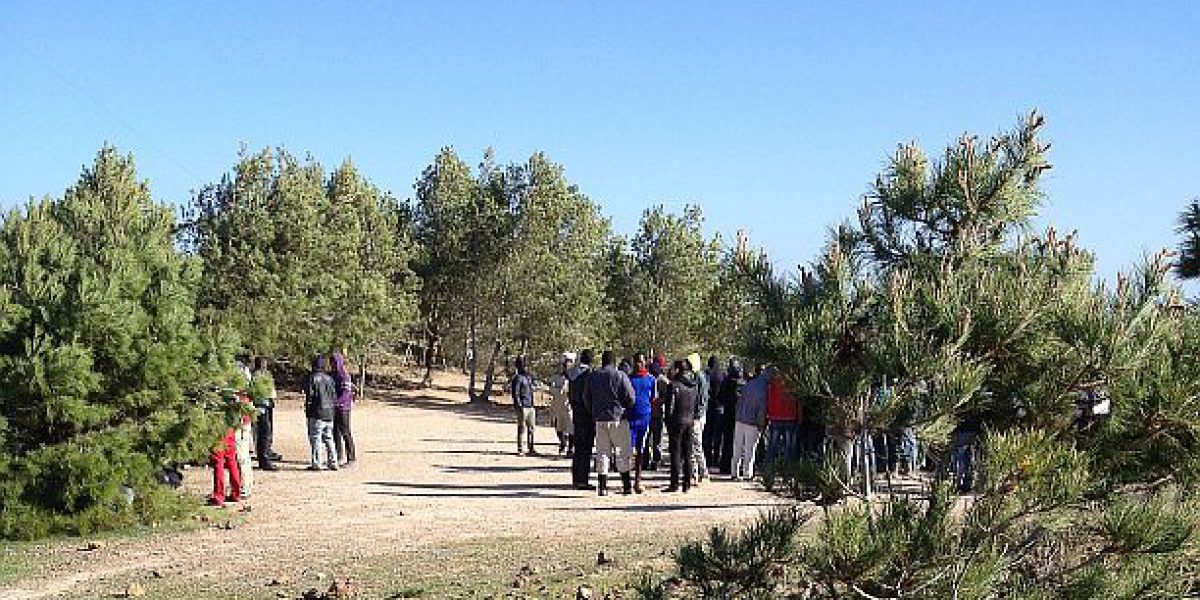
Brussels, 14 April 2014 – In early September, King Mohammed VI of Morocco approved a set of sweeping changes to the country’s asylum and migration policies. On the ground, there have indeed been changes: irregular migrants are no longer being left at the Algerian border, and police raids against migrants in Oujda have ceased.
But according to JRS Europe in a recent visit to Morocco, migrants — many among whom are in need of protection — still find themselves trapped in a country where they have few rights.
From 3-8 March 2014, a JRS Europe delegation met with migrants and partners in the northern Moroccan city of Nador. Situated just 16km south of Spanish enclave Melilla, Nador is a final point of departure for many migrants and protection seekers who aspire to enter Europe via Melilla.
However, oftentimes these hopes are dashed due to the EU’s closed borders and the pressure they put on the Moroccan authorities to keep migrants at bay.
“The European approach towards border has shifted the responsibility to protect forced migrants solely in the hands of countries at the EU’s borders”, says Mr Stefan Kessler, JRS Europe’s Senior Policy Officer who visited Nador. “The problem is that these countries, such as Morocco, often lack the resources or the willingness to provide such protection”.
JRS Europe visited migrants hiding from the police in the Gougourou mountain forest, situated between Nador and Melilla. There they met with 80 people from Sub-Saharan Africa, including many women and children of all ages. Some of the migrants had been severely injured. They were poorly equipped for living in the forest: flip-flops for shoes and no warm clothing.
In a visit to a hospital in Nador, JRS Europe met with more migrants with severe head wounds and injuries from their attempt to scale the fence at Melilla.
“Migrants who are released from the hospital either go back to the Gougourou forest and wait for another chance to go to Melilla, or they go to Casablanca or Rabat. They don’t want to stay in Nador because they fear getting caught by the police”, says Mr Kessler.
During the visit, JRS Europe went to Melilla to learn more about the experiences of migrants who do find a way in. In the Centro de Estancia Temporal de Inmigrantes (CETI) of Melilla, about 1,200 asylum seekers were accommodated. Most were from Sub-Sahara Africa, but there were also 200 from Syria.
Despite the rising numbers, most are not transferred to the Spanish mainland. Despite good living conditions in the Melilla CETI, asylum seekers can wait for as long as three years before a decision on their application.
The situation has become more tense after the recent mass-influx of migrants to Melilla and Ceuta, the second Spanish enclave, which occurred after JRS Europe’s visit.
“Moroccan authorities and local organisations who provide support face a number of challenges due to the increased number of migrants and their long-term stay in the country. Before, Morocco was a country of transit; now it is becoming a country of destination”, says Mr Kessler.
“Despite the promise of sweeping policy change, in reality migrants and asylum seekers still lack many important rights and overwhelming obstacles to protection. This makes Morocco an unsafe place for forced migrants”, Mr Kessler continues.
According to JRS Europe, the responsibility to protect the lives of forced migrants lies also in the hands of the EU. The European Commission is currently negotiating a readmission agreement with Morocco; sadly, refugee protection is not a priority.
“The protection of human lives must be higher up on the list of political priorities, even when dealing with the lives of people stuck in transition”, concludes Mr Kessler.
*Read JRS Europe’s policy paper, “Forced migrants in Morocco and Melilla“.
Despite the promise of sweeping policy change, in reality migrants and asylum seekers still lack many important rights and overwhelming obstacles to protection. This makes Morocco an unsafe place for forced migrants.

